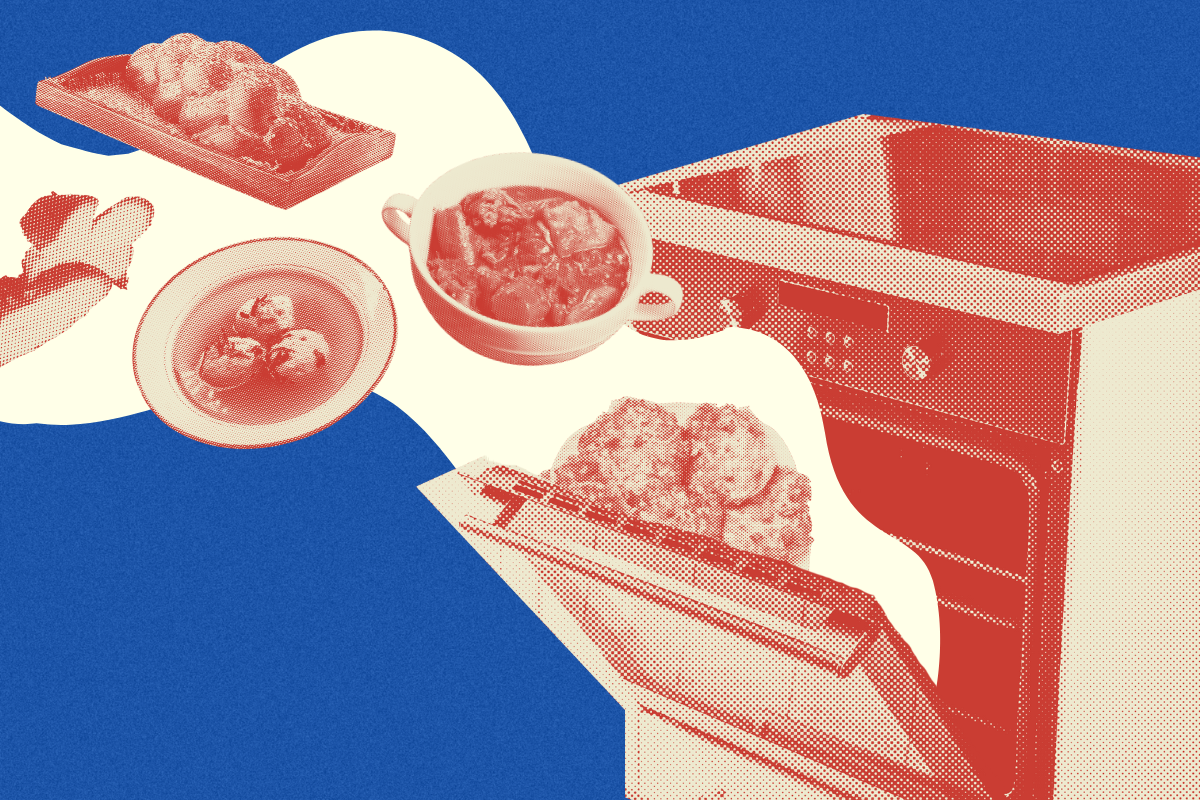Whenever I make matzah ball soup, I’m sure to add a heavy hand of dill and way too much black pepper that will inevitably collect at the bottom of the bowl. Not because I particularly like the flavors, but because that’s how it has always been at home, and I guess I’m hoping: Maybe this soup can bring me home, even though I’m 2,000 miles away.
Throughout college, I ventured into various Jewish communities and practices, taking the time to explore what my Jewish life could look like away from my parent’s house. When I took part in a fellowship my senior year that would support some sort of Jewish project, I started to dream up an idea for a deep dive into Jewish food.
I know cuisine can be just as messy to draw boundaries around as identity, so I distanced myself from strict definitions. To me, Jewish food is comforting and joyful. It’s anything that reminds me of my family recipes, something that would be served over family stories from my grandparents’ kitchen. My journey became one of learning Jewish stories — of my peers, my family and other communities — through food.
When I flew back home to California the winter before graduation, I started my research. The first place I turned to was a cookbook kept from my parents’ wedding, compiled by family members for the occasion. I took in the recipes, and made sure not to skip their dramatic descriptions.
“Serves 8, unless Matthew is present. Then it serves 4.”
“Brisket recipe. Perfect for Shabbat dinner. (Can be prepared with or without the bacon.)”
“This recipe serves 20, but can be sized up or sized down. Luckily, I’ve only ever had to size up.”
I was amused by the variety of family history I was able to piece together from these recipes. My own family didn’t keep kosher, but my mom would never allow treif on the Shabbat or holiday table. Clearly, there was no consensus for following kashrut (kosher laws) throughout the family — but the sense of humor was threaded through. More meaningfully, the tidbits shed light on family history I had only heard about in passing: The generations where everyone lived in New York and gathered every holiday for big family meals, before the “Cohen Diaspora” where we scattered across the country. It saddened me to think that since I was born, the big holiday recipes have only ever been sized down.
Over the next few months I shared both stories and food with friends. I tasted the kasha of one friend’s childhood, and reminisced through the New York Jewish food scene with another. I explored variations on classic Jewish dishes in modern Jewish cookbooks, and I made my own versions of traditional recipes. I transformed my mother’s matzah ball soup into a chicken-y, pepper and dill-infused risotto. I attempted a gluten-free kugel, a classic Jewish Ashkenazi dish that for some reason my family never had. Simple as it may be, with so many possible variations, this was the dish I struggled with the most. I’m still not quite sure if I did it “right.” But with no set family standard, I can keep trying variations until I find one I want to settle on. This is its own revelation.
A big stew is a forgiving meal; you can add a little of this and a pinch of that and it’ll turn out just as delightful as if you had followed a recipe to a T. Conveniently, a recipe you can put on a burner for hours also works well for Shabbat dinner. In examining history while preparing for my own Shabbat dinners, I realized in real time why these dishes became such Jewish classics. I spooned sweet-and-sour meatball stew and chicken rice soup into mismatched mugs around my little dorm room kitchen, exchanging stories with my friends about Jewish family traditions of our past. I found that storytelling works best over a steaming bowl, food tastes better with a backstory and that tradition can be altered to best fit in your life. Since then, the recipes themselves have been my home away from home.
My project took me through graduation, where I’ve been able to decide what kind of Jewish experiences I want in my life long-term. While I connect less to the religious practices than I used to, I’ve started hosting Shabbat dinners regularly, a practice that has provided community, a space to share traditions and something to look forward to throughout the week. Meanwhile, my seder plate sits on top of my cabinets in the apartment I share with my older sister. Even though I long for the experience of a bustling, busy holiday meal, I’ve come to appreciate the ones involving even just the two of us. For the past two years of high holidays, we have cooked our family recipes for a small community, and pondered a future where we host big Cohen family gatherings once again, with a new generation. Perhaps one day, the future generation will find home in our family’s matzah ball soup — with a heavy hand of dill and way too much black pepper — just like I still do.



